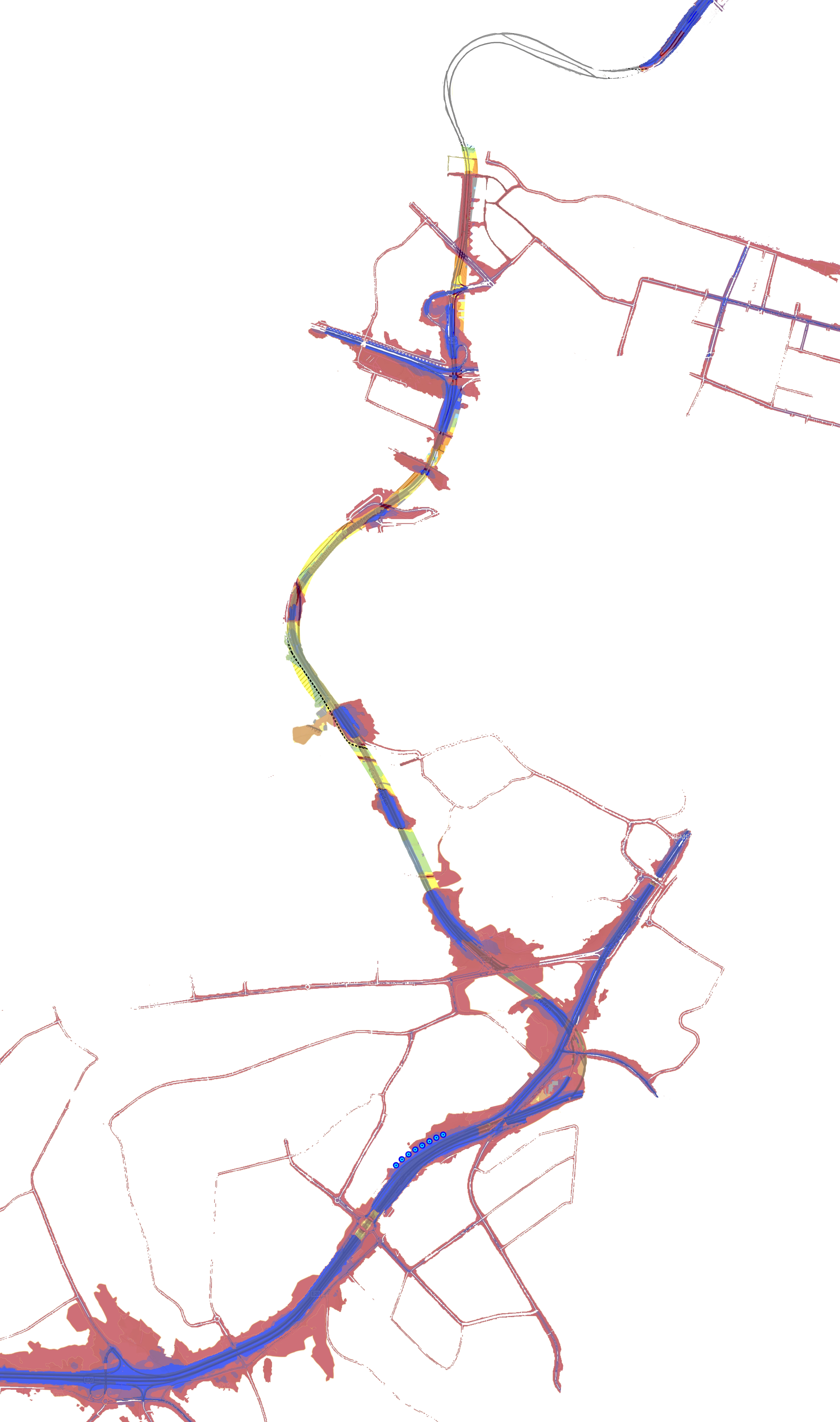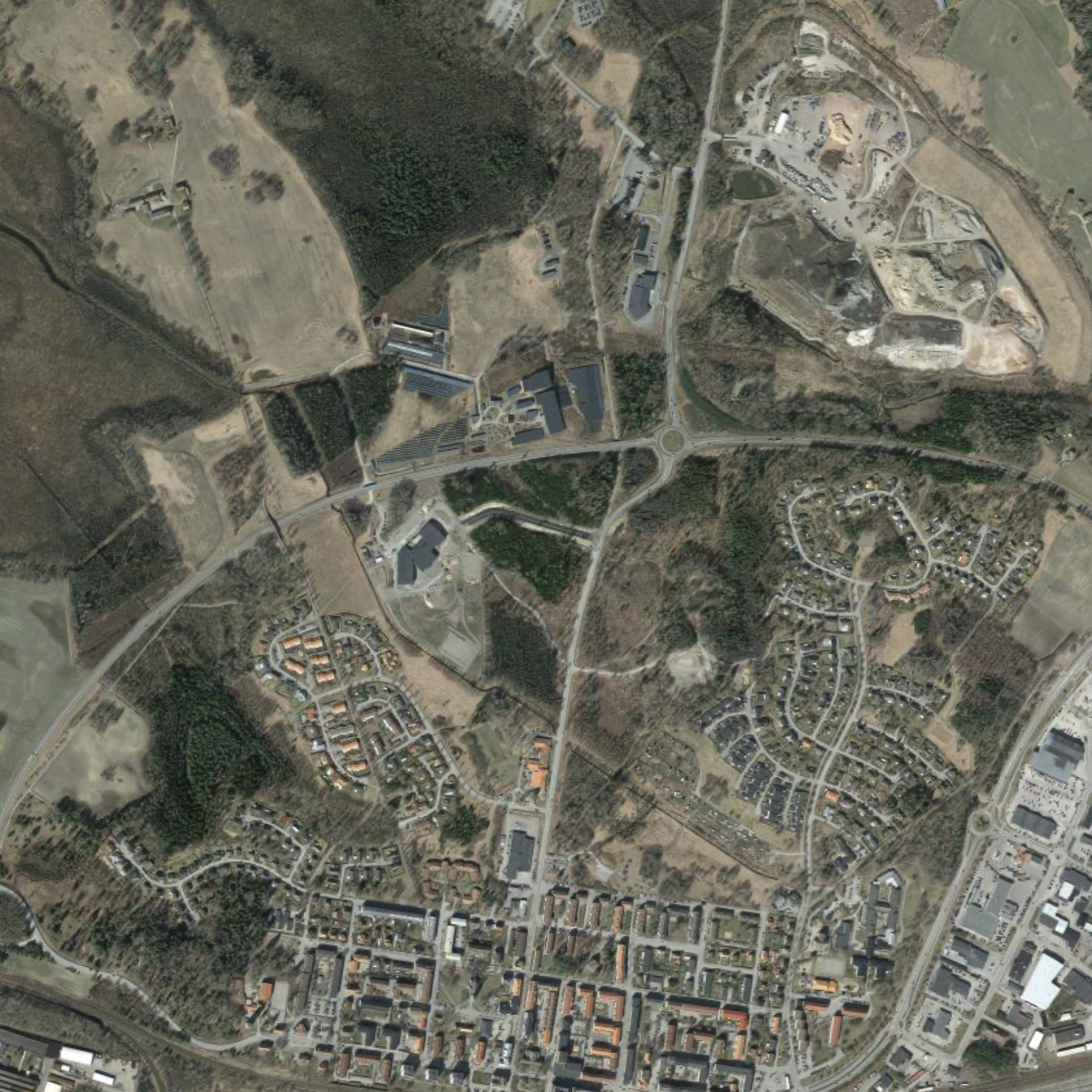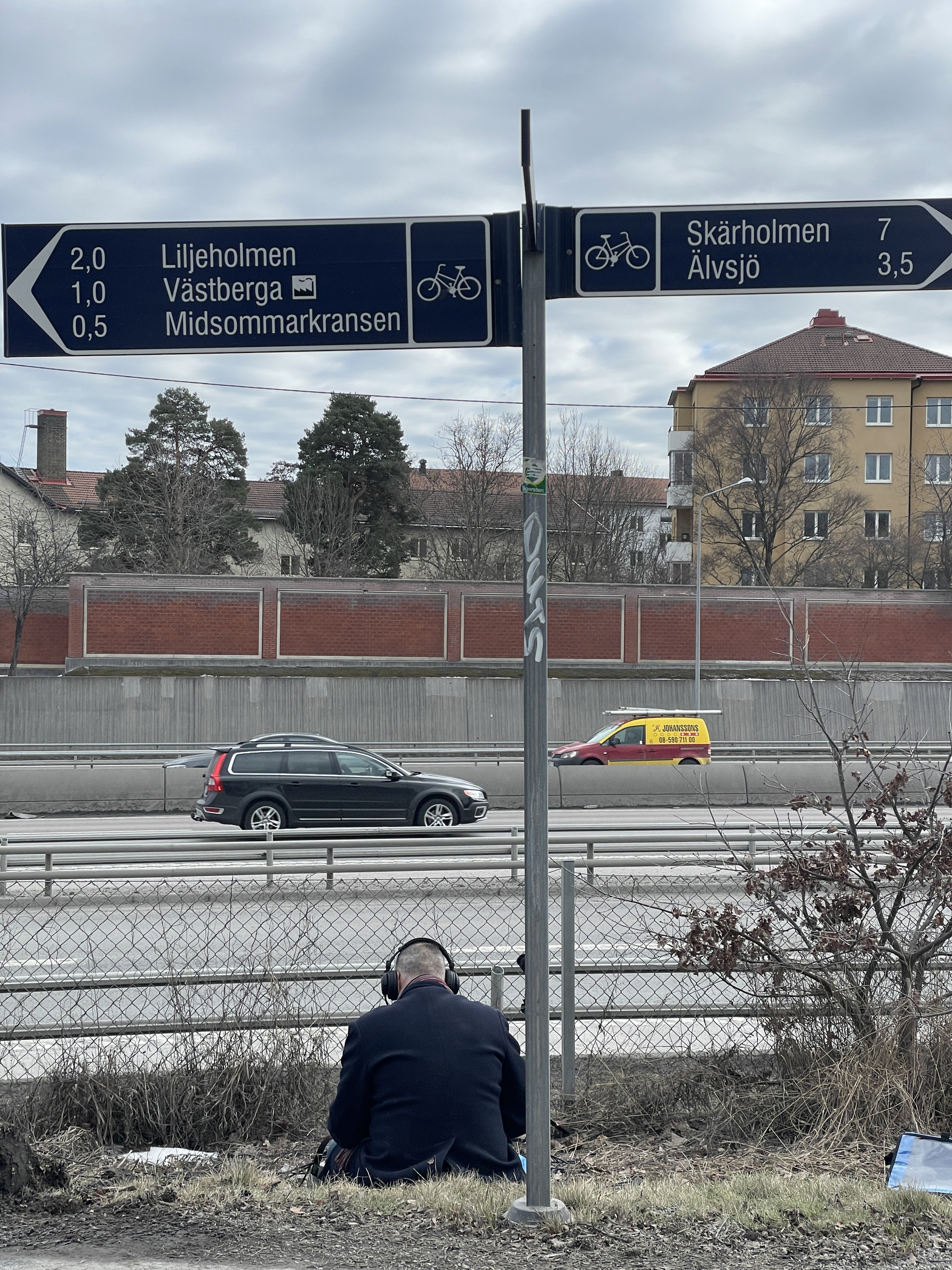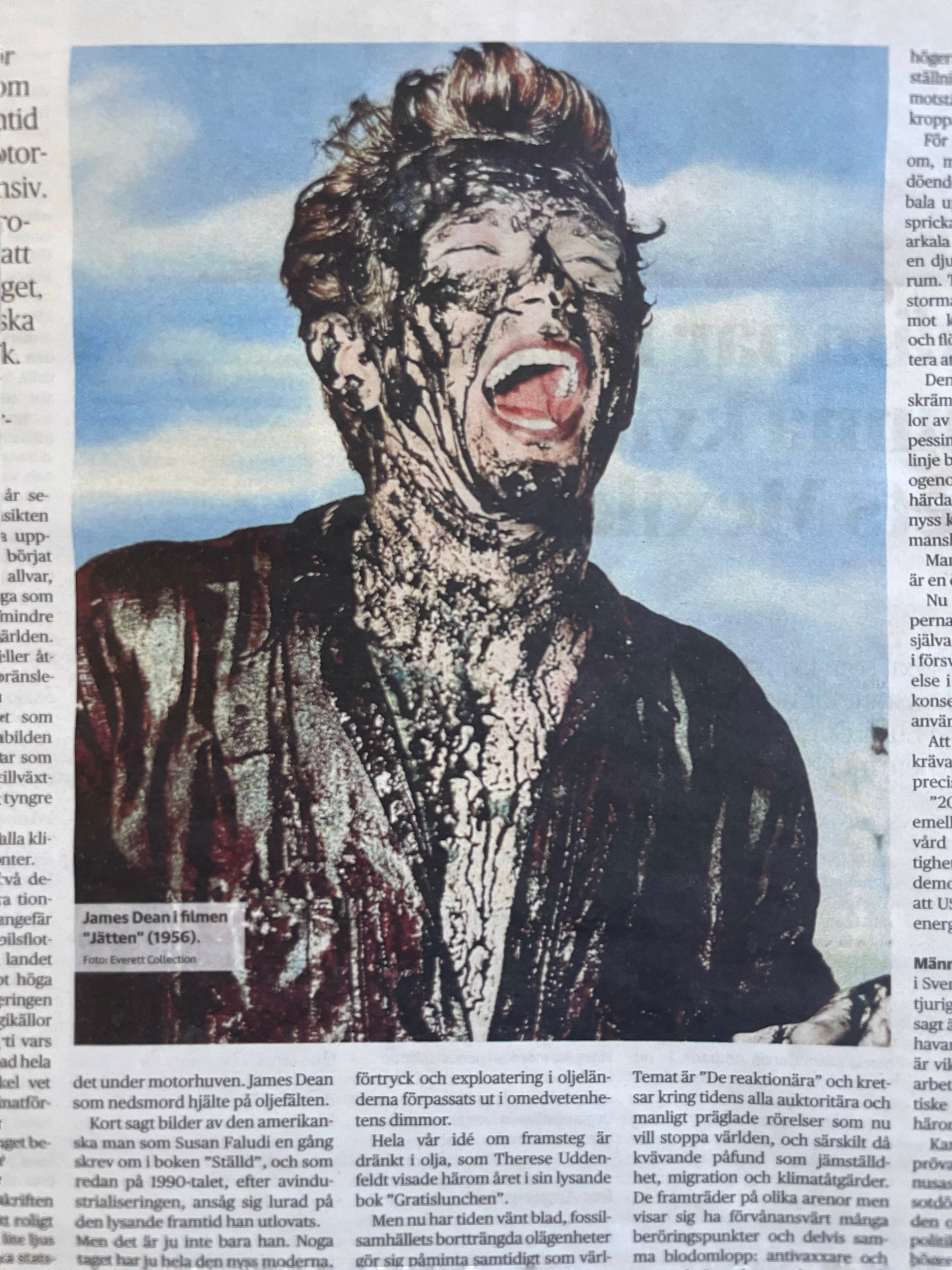The Phantom Carriage
The Phantom Carriage is a practice-based research project in which an 8-channel sound recording from Essingeleden / E4an is played with 8 speakers deployed along national road 52 in Katrineholm. About displacement. The sound of movement, the movement of sound, the emotional movement the experience of art can imply. About noise and its impact on us and the surroundings. About future nostalgia, how will the future sound, what will the roaring diesel truck sound like in the future? The title The Phantom Carriage (Körkarlen in Swedish) is borrowed from the film by Victor Sjöström. The choice of title also opens up other aspects of the work / project.
En 8-kanalig ljudinspelning från Essingeleden / E4an uppspelad med 8 högtalare utplacerade längs riksväg 52 i Katrineholm.
Om förflyttning. Ljudet av förflyttning, förflyttningen av ljud, den förflyttning upplevelsen av konst kan innebära.
Titeln The Phantom Carriage (Körkarlen på svenska) är lånad från filmen av Victor Sjöström. Valet av titel öppnar även för andra aspekter av arbetet / projektet.*
Från början tänkt som ett bevarande, en arkivering, av ett ljudlandskap med hjälp av ljudinspelningar på ett antal punkter längsmed Essingeleden / E4an i Stockholm. Rent formmässigt såg jag en linjäritet mellan vägen som tidslinje och ljudredigeringsprogrammets tidslinje, där gestaltningen skulle vara lika lång som en genomsnittlig färd på Essingeleden. Ett soundtrack utan film.
Som ett resultat av seminarier, samtal, tankar och idéutbyten påbjudna av kursen har projektet tagit en delvis annan väg.
Solparken i Katrineholm ligger invid riksväg 52, vilket väckte idén att förflytta eller transplantera ett ljud från en plats till en annan, att ljudlägga en plats med ljudet från en annan. Med åtta mikrofoner placerade med cirka två meters avstånd invid Essingeledens övergång till Södertäljevägen gjordes en ”linjeinspelning”, en teknik som medför att vid uppspelning med 8 högtalare bevaras ljudets rörelse, en utökad stereoeffekt om man så vill.
*Ljudet vi hör är ljudet av någon eller något på väg till och/eller ifrån någonting. Kött och plåt, kött och stål rör sig framåt i 70 kmh. Folk kolliderar, kör av vägen, blir påkörda eller överkörda, dör eller blir svårt eller mindre svårt skadade. Avgaser och koldioxidutsläpp förstör vår planet och orsakar lungcancer, bullret leder till stress och överdödlighet.
Vi kör ihjäl oss själva, varandra och hela planeten. En svanesång över förbränningsmotorn och vår självförbrännande livsstil.
Vi vet vad vi håller på med. Vi är rimligtvis mer tillräkneliga än Körkarlens svårt alkoholiserade protagonist David Holm som får en sista chans att förbättra sig innan det är för sent.
Lista, referenser
The Phantom Carriage, Victor Sjöström (1921)
Crash, J.G. Ballard (1973)
Concrete Island, J.G. Ballard (1974)
Lost Highway, Leon Payne, Hank Williams (1948)
Lost Highway, David Lynch (1997)
Autobahn, Kraftwerk (1974)
Cosmic Cars, Cybotron (1982)
Warm Leatherette, The Normal (1978)
Asphalt Rundown, Robert Smithson (1969)
Rhythmanalysis: Space, Time and Everyday Life, Henri Lefebvre (1992)
The Sonic Environment of Cities, Michael Frank Southworth (1967)
Analysis of Highway Noise, C Michael Hogan (1973)
Gratislunchen, Therese Uddenfeldt (2016)
De reaktionära, Fronesis, nr 76-77 (2023)
Giant, George Stevens (1956)
Rethinking the Ordinary Through the Ritual of Transversal Listening
Jacek Smolicki
https://www.researchcatalogue.net/view/883787/895793
Slussen Project
Jacek Smolicki
https://www.smolicki.com/slussenproject.html#
Figur 1, höger
Bullerkarta, Essingeleden
De åtta blåvita cirklarna längre ned i bilden indekerar mikrofonernas placering vid inspelningstillfället
http://stockholm.bullerkartan.se
The highway as the perfect apparatus
“The perfect apparatus, it seems to me, is the highway. In it maximum circulation coincides with maximum control. Nothing moves that isn’t both incontestably “free” and strictly classified, identified, individuated in exhaustive files of digitized registrations. A network endowed with its own fueling stations, its own police, its autonomous, neutral, empty, and abstract spaces, the highway system perfectly represents the territory, as if laid out in bands over the land, a heterotopia, the cybernetic heterotopia.”
“Control is not discipline. You do not confine people with a highway. But by making highways, you multiply the means of control. I am not saying this is the only aim of highways, but people can travel infinitely and “freely” without being confined while being perfectly controlled. That is our future.”
http://aphelis.net/tiqqun-autoroute-dispositif/
Roadway noise, causes:
Speed
Traffic operations noise is affected significantly by vehicle speeds, since sound energy roughly doubles for each increment of ten miles an hour in vehicle velocity; an exception to this rule occurs at very low speeds where braking and acceleration noise dominate over aerodynamic noise.
Vehicles
Trucks contribute a disproportionate amount of noise not only because of their large engines, but also the height of the diesel stack and the aerodynamic drag. Significant interior noise is usually present inside moving motor vehicles; in fact, passengers are generally not aware that these levels are high, because experience has led motorists to expect levels commonly exceeding 65 dBA.
Surfaces
Roadway surface types contribute to different noise levels. Of the common types of surfaces in modern cities, there is a 4 dB difference between the loudest and the softest: chip seal type and grooved roads being the loudest, and concrete surfaces without spacers being the quietest, and asphaltic surfaces being about average.
Rubberized asphalt (which uses recycled old tires) is much quieter and is already widely used. Experimental Porous Elastic Road Surfaces (PERS) might cut road noise in half. PERS is made by adding ground up tires to asphalt paving material.
Studies have shown that cutting longitudinal grooves in the pavement reduces noise.
Tires
Tire types can cause 10 dB(A) variations in noise, based on a 2001 sample of 100 commercially available tires. As of 2001, there was no correlation between grip and noise. Quieter tires may have slightly lower rolling resistance. Tire labeling for noise, grip, and rolling resistance has been widely introduced in Europe, with noisy tires being taxed.
Geometry
Roadway geometrics and surrounding terrain are interrelated, since the propagation of sound is sensitive to the overall geometry and must consider diffraction (bending of sound waves around obstacles), reflection, ground wave attenuation, spreading loss and refraction. A simple discussion indicates that sound will be diminished when the path of sound is blocked by terrain, or will be enhanced if the roadway is elevated so as to broadcast; however, the complexities of variable interaction are so great, that there are many exceptions to this simple argument.
Wind
Micrometeorology is significant in that sound waves can be refracted by wind gradients or thermoclines, effectively dismissing the effect of some noise barriers or terrain intervention.
Obstacles
Geometry of area structures is an important input, since the presence of buildings or walls can block sound under certain circumstances, but reflective properties can augment sound energy at other locations.
https://en.wikipedia.org/wiki/Roadway_noise#cite_note-:0-2
The sonic environment of cities
Michael Frank Southworth
https://dspace.mit.edu/handle/1721.1/102214
Rhytmanalysis
“Will the (future) rhythmanalyst … set up and direct a lab where one compares documents: graphs, frequencies and various curves? … Just as he borrows and receives from his whole body and all his senses, so he receives data from all the sciences: psychology, sociology, ethnology, biology; and even physics and mathematics … He will come to ‘listen’ to a house, a street, a town, as an audience listens to a symphony.”
Rhythmanalysis, according to wikipedia: Book by Henri Lefebvre, that outlines a method for analyzing the rhythms of urban spaces and the effects of those rhythms on the inhabitants of those spaces. It builds on his past work, with which he argued space is a production of social practices.
Rhythmanalysis: Space, Time and Everyday Life, Henri Lefebvre
Analysis of highway noise
C Michael Hogan
Abstract
Highway noise will be discussed from the standpoint of planning and designing highways as well as the corresponding questions of land use in the adjacent corridor. In the location decision of a highway corridor and in choosing the specific highway alignment, the noise impact upon the adjacent community can be evaluated by predictive methods and compared to existing noise levels in that corridor. In such a way, one can compare the noise impacts of alternate location or alignment decisions in a manner consistent with applicable federal and state noise criteria. Once an alignment determination has been made the detailed design of the roadway including roadway elevation and the traffic operating characteristics can be addressed such that noise is minimized in the adjacent community. Factors by which highway noise may be further minimized by land use planning and proper design and construction of buildings near the highway itself will also be discussed.
Sound propagation near an urban highway is an extremely complex matter because of the role which meteorological conditions play as well as the role of complex topography and the existence of man made structures. The technology for addressing the variety of these features by means of a computer model will be discussed, especially as this prediction method allows one to take into account future descriptions of highway traffic which can address traffic volumes, vehicle mix, vehicle speeds, future noise control devices at the vehicular source and other factors.
https://link.springer.com/article/10.1007/BF00159677
Sex and wheels: Zadie Smith on J.G. Ballard's Crash
”Like the characters in Crash we are willing participants in what Ballard called "a pandemic cataclysm that kills hundreds of thousands of people each year and injures millions." The death-drive, Thanatos, is not what drivers secretly feel, it's what driving explicitly is.”
https://www.theguardian.com/books/2014/jul/04/zadie-smith-jg-ballard-crash
Wir fahren, fahren, fahren auf der Autobahn
Die Sonne scheint mit Glitzerstrahl
Wir fahren, fahren, fahren auf der Autobahn
Weiße Streifen, grüner Rand
For a life of sin, I have paid the cost
When I pass by, all the people say
Just another guy on the lost highway
And a woman's lies makes a life like mine
Oh, the day we met, I went astray
I started rolling down that lost highway
Neither good nor bad, just a kid like you
And now I'm lost, too late to pray
Lord, I take a cost, oh the lost highway
On this road of sin, are you sorrow-bound?
Take my advice or you'll curse the day
You started rollin' down that lost highway
Sitting in my car, driving very far
Driving all alone, far away from home
Music's playing loud, a hundred thirty miles
Stepping on the gas, accelerating fast
My cosmic car
My cosmic car
My cosmic car
I wish i could escape from this crazy place
Fantasy or dream, I'll take anything
Suddenly surprise, right before my eyes
All i see are stars, and other cosmic cars
My cosmic car
My cosmic car
My cosmic car
My cosmic car
My cosmic car
Is going, is going, is going
My cosmic car
My cosmic car
My cosmic car
My cosmic car
My cosmic car
Is going
My cosmic car
I love my car, and drive it real fast
I love my car, and stepping on the gas
My cosmic car
Cosmic Cars, Cybotron 1982
© 1982 Fantasy Records
Warm Leatherette
Warm Leatherette
In the underpass
In the underpass
Warm Leatherette
Warm Leatherette
Feel the steering wheel
Feel the steering wheel
Warm Leatherette
Warm Leatherette
Warm Leatherette
Warm Leatherette
On your burning flesh
You can see your reflection
In the luminescent dash
Warm Leatherette
Warm Leatherette
The hand brake penetrates your thigh
Quick lets make love before you die
Warm Leatherette
Warm Leatherette
Warm Leatherette
Warm Leatherette
Warm Leatherette








